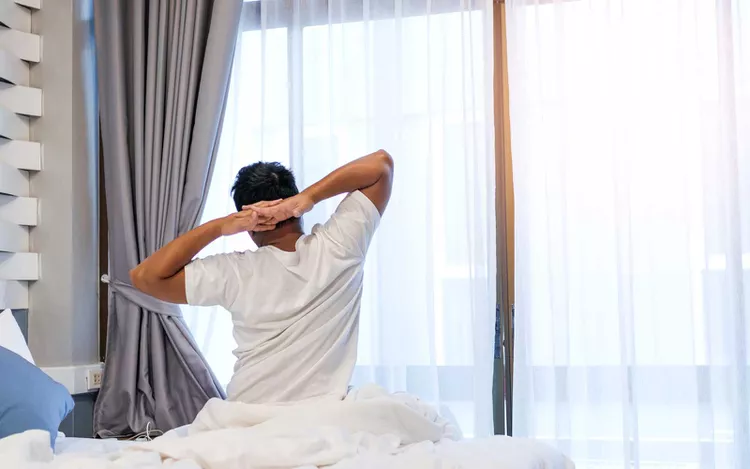Improving Your Sleep Quality While Traveling
A few months ago, I traveled to Sacramento to run a marathon. I chose a cozy and quiet Airbnb and arrived two days early to settle in before my race.
After my arrival, I made myself comfortable in my new place. I had a snack, watched some TV, and then climbed into the comfortable bed to go to sleep. Although it was past my usual bedtime and the race wasn’t until the next day, I found myself unable to sleep. This was particularly perplexing because I had no time zones to adjust to.
However, I just couldn’t sleep. I would start to doze off, only to find myself wide awake. It was extremely frustrating.
The First-Night Effect Explained
What I experienced, while annoying, is completely common, according to Dr. Masako Tamaki, an assistant professor in the Department of Cognitive, Linguistic & Psychological Sciences at Brown University.
In 2016, she published a study in the journal “Current Biology” that describes what’s known as the “first-night effect” in human sleep research. When subjects sleep over in a lab for any kind of study, they do not sleep as well due to the unfamiliar environment. As a result, researchers often disregard the first night’s data, focusing instead on subsequent nights.
Tamaki and her team discovered that when individuals sleep in new locations, their two brain hemispheres exhibit different levels of activity. Consequently, one side remains more active, leading to lighter sleep.
Although the exact reason remains uncertain, the more alert hemisphere tends to be the left side, which is also more responsive to noise. Fortunately, by the second night, brain activities typically level out, allowing for more even sleep across both hemispheres.
Tips for Better Sleep While Traveling
Dr. Tamaki suggests that our brains behave like animals in unfamiliar environments—monitoring surroundings and thus remaining alert to unusual sounds. It harks back to ancient survival instincts where being partially alert allowed for sensing danger.
She recommends arriving two nights early when sleep quality is crucial. “This way, my important meeting is not impacted by the first night effect,” she states. If that isn’t feasible, Tamaki suggests spending ample time in the new room, bringing personal items to create a sense of familiarity.
Utilizing Familiar Elements
Patricia Hajifotiou, a frequent traveler, employs a similar strategy. Leading tours worldwide through her company, The Olive Odysseys, she is subject to numerous different sleeping conditions. To combat potential sleeplessness, she carries a lavender sachet bag from home to place on her pillow.
“This works in two ways: it provides a familiar sight, and the scent is reassuring, helping my brain to settle down and fall asleep,” she explains.
Jeff Johns, an adventure travel blogger, incorporates routine into his nightly rituals. “Whether it’s brushing my teeth, meditating, or laying out my clothes, maintaining consistency each night, regardless of location, aids sleep,” he notes. He also recommends utilizing white noise or ambient noise applications to obscure unfamiliar sounds.
Creating Comfort in New Environments
Travel blogger Lauren Juliff experienced significant difficulties adjusting to new sleeping environments, particularly as a frequent traveler. “If it takes a week to sleep better in new accommodations but I’m changing hotels every week, it leads to considerable sleep deprivation,” she remarked.
To counteract this, she devised several methods, including spraying pillow mist on bed linens. “The scent’s familiarity tricks my mind into believing I’m still at home,” she says. Additionally, she uses sleep headphones to listen to low-volume podcasts, mirroring her home routine for enhanced comfort and consistency.
Implementing Additional Methods
Michael Alexis, who works at the museum tour company Museum Hack, uses the “Blackout Method” to enhance sleep. This entails carrying a sleep mask and high-quality earplugs while employing a white-noise app on his phone to drown out disruptive external noises like traffic and announcements.
He also emphasizes controlling temperature, humidity, and stress for optimal sleep conditions. A unique tip he shares involves placing a chair in front of the door as a precautionary measure against potential intrusions.
Adjusting Sleep Expectations
As for Dr. Tamaki, when faced with the challenges of the first night, she has adopted a different strategy. “I’ve given up trying to achieve a perfect night’s sleep on the first evening,” she shares. Instead, she aims to retire a little earlier to offset any sleep quality shortfalls with extra resting hours.




